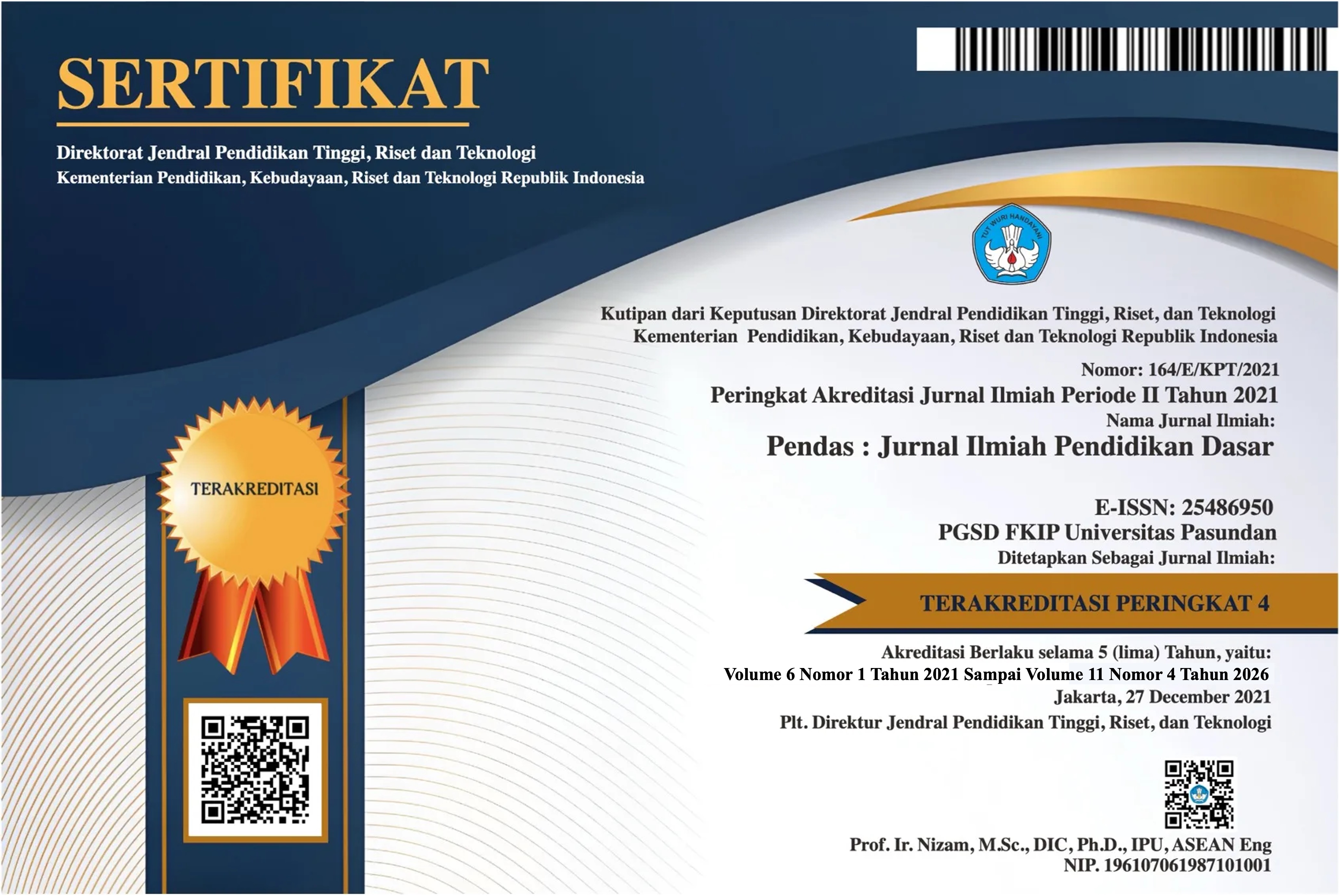EFEKTIVITAS MODEL PEMBELAJARAN CHILDREN LEARNING IN SCIENCE (CLIS) TERHADAP MISKONSEPSI SISWA PADA MATERI FOTOSINTESIS
DOI:
https://doi.org/10.23969/jp.v9i2.13257Keywords:
CLIS learning model, misconception, photosynthesis, effectiveAbstract
The aim of this research is to describe the level of effectiveness of using the Children Learning In Science (CLIS) learning model on student misconceptions regarding photosynthesis material in fourth grade elementary school. This is motivated by the lack of variety in the learning process which can cause students to have misconceptions about certain material. The research method used was quasi experimental design with Nonequivalent Control Group Design. The population came from 2 class IV students at SDN Kebon Baru 09 Pagi, South Jakarta in the 2023/2024 academic year using a saturated sampling technique involving a total of 54 students. There were 27 students in each class, where class IVA was the control group and class IVD was the experimental group. The instrument used was a description test of 10 questions which was carried out at 2 meetings (pretest and posttest). Based on data analysis, it can be concluded that by providing treatment to the experimental group by implementing the CLIS learning model, there was an increase in student understanding. It can be seen in the comparison that the difference in the logit value of students' abilities in the experimental group is 1.954 while the control group is only 1.425. Apart from that, it can be seen from the increase in the percentage value that the experimental group reached 17.19% while the control group only reached 10.88%. Furthermore, it can be seen in the decrease in the number of students who have misconceptions in questions 6, 7, 8, and 9. Therefore, it can be concluded that implementing the CLIS model is said to be effective because it can increase understanding and reduce or minimize the occurrence of misconceptions among students, especially regarding photosynthesis material.
Downloads
References
Bambico, T. (2002). Mathematical Strengths, Difficulties and Misconceptions of Teachers: Analysis of their Performance in an Achievment Test. Jepang: Hiroshima University.
Hamdu, G., Fuadi, F. N., Yulianto, A., & Akhirani, Y. S. (2020). Items quality analysis using rasch model to measure elementary school students’ critical thinking skill on stem learning. JPI (Jurnal Pendidikan Indonesia), 9(1), 61-74.
Huda, M. 2014. Cooperatif Learning: Metode, Teknik, Struktur, dan Model Terapan. Yogyakarta: Pustaka Pelajar.
Ismi, W., & Ardiansyah, R. (2020a). ANALISIS MISKONSEPSI SISWA PADA MATERI FOTOSINTESIS MENGGUNAKAN INSTRUMEN FOUR TIER DIAGNOSTIC TEST (Vol. 7, Issue 2).
Shapiro, B. (1995). What children bring to light: A constructivist perspective on children's learning in science. Teachers College Press.
Sugiyono. (2013). Metode Penelitian Kuantitatif, Kualitatif, dan R & D. Bandung: Alfabeta
Suparno, P. (2013). Miskonsepsi & Perubahan Konsep dalam Pendidikan Fisika.Jakarta: PT Grasindo.
Wijaya, Nuriman. 1997. Penerapan Model CLIS (Children’s Learning In Sciense) untuk Meningkatkan Konsepsi Siswa tentang Sumber Makanan dalam Pembelajaran IPA-SD. Tesis UPI.
Nana, S. S. (2010). Metode penelitian pendidikan. Bandung: Remaja Rosdakarya.
Downloads
Published
Issue
Section
License
Copyright (c) 2024 Pendas : Jurnal Ilmiah Pendidikan Dasar

This work is licensed under a Creative Commons Attribution 4.0 International License.



















